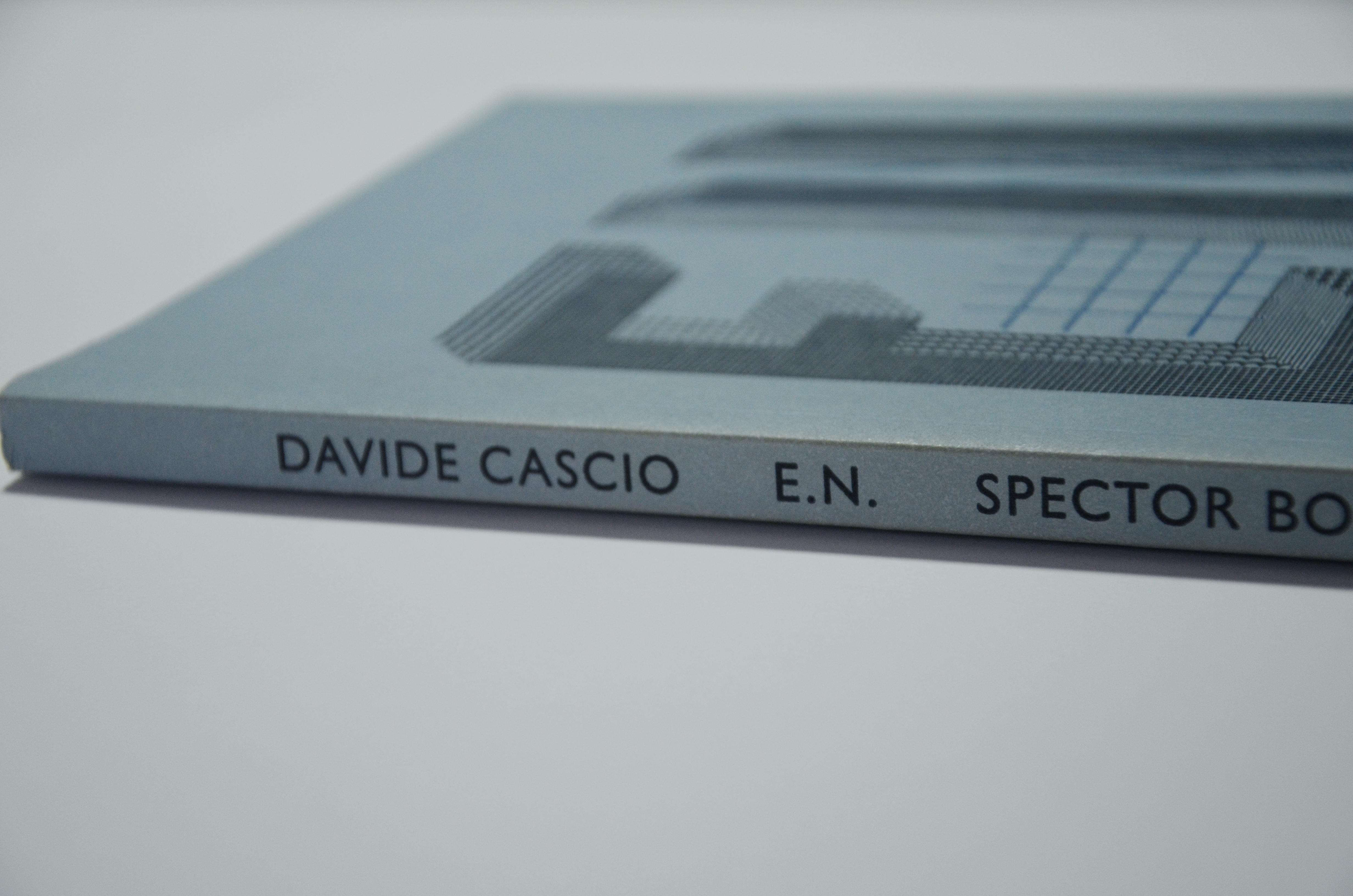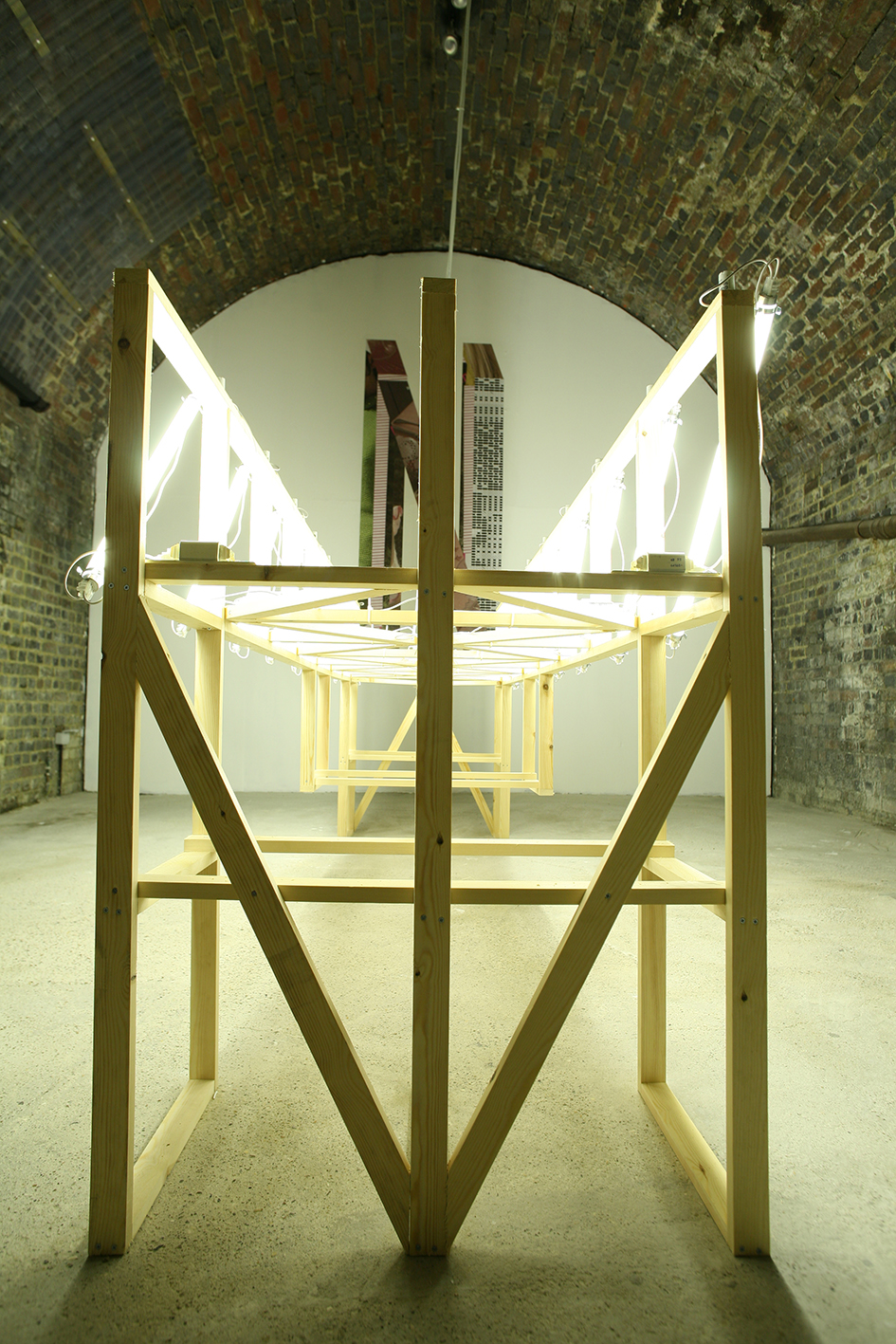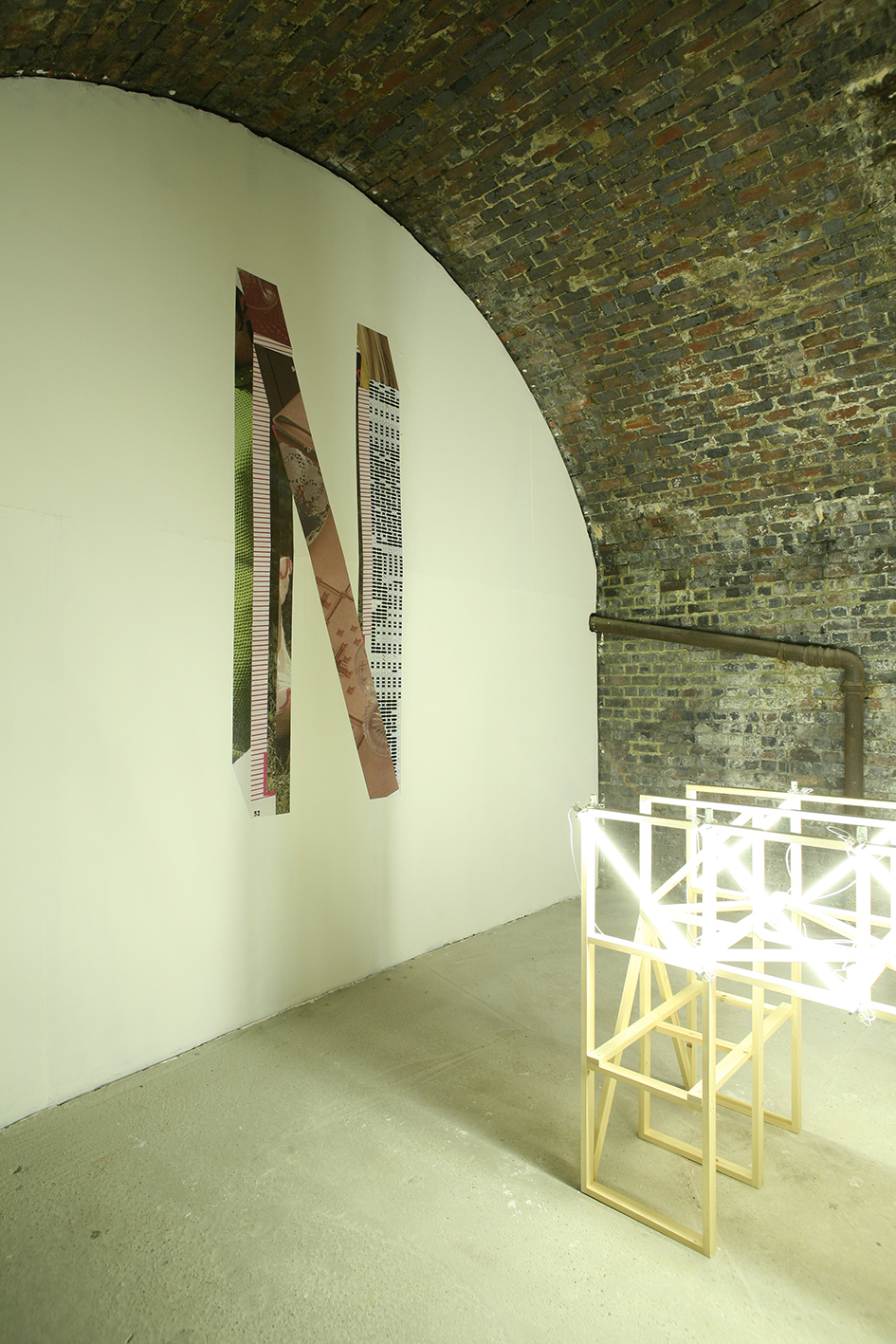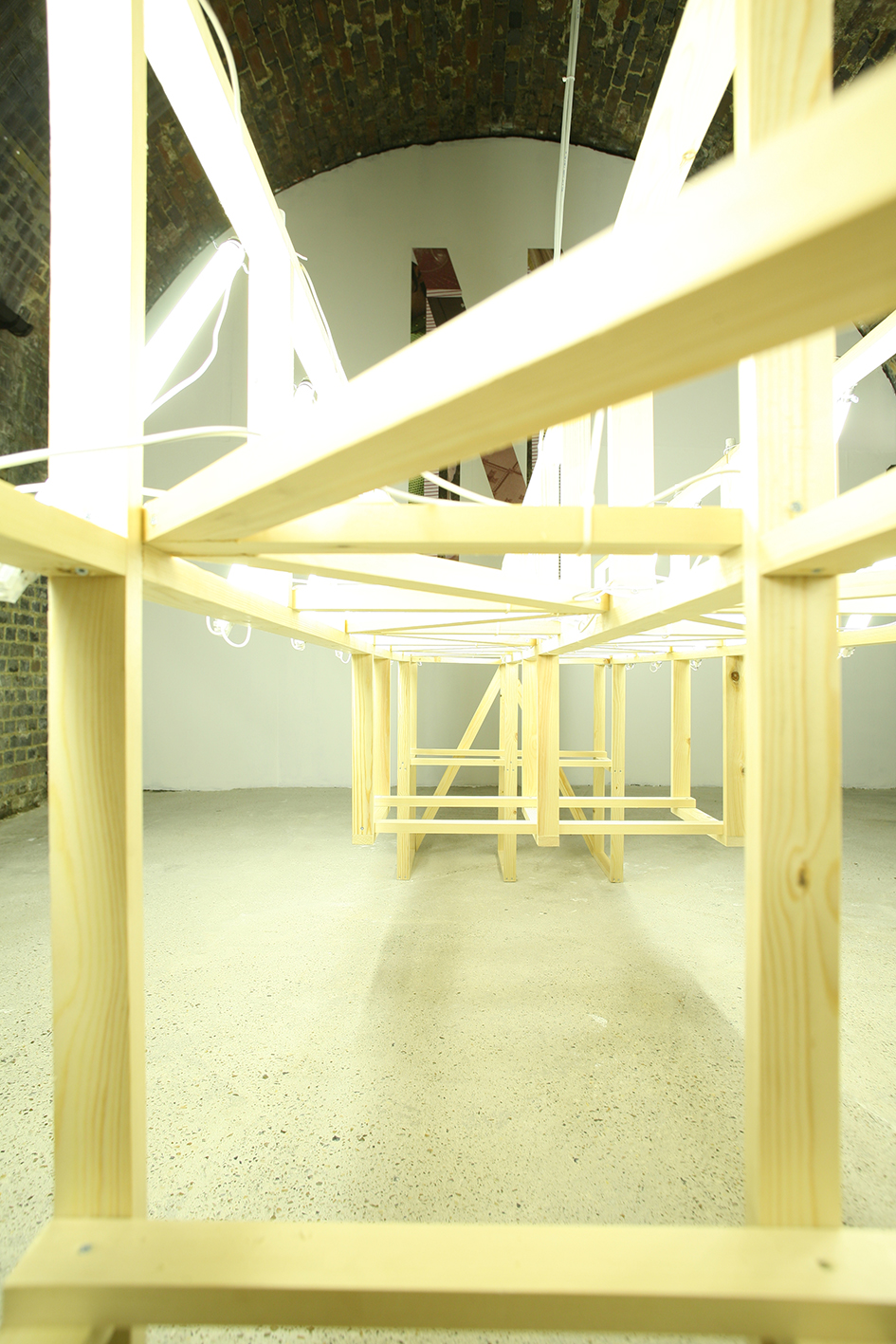E.N. quasi-bridge
![]() E.N. quasi-bridge
E.N. quasi-bridge
2008
Wood, neon, wall paper, collage on MDF
Variable dimensions
FormContent, London
![]()
![]()
E.N. Esprit Nouveau
2008
Collage sur papier
70 x 50 cm
![]()
![]()
![]()
![]()
E.N. quasi-bridge
FormContent London
Francesco Pedraglio, Caterina Riva,
Pieternel Vermoortel
‘The idea has to be built’. Solemn and hurried as any statement should be, the inner discrepancy between the ideal and the factual introduced by this assertion, struck us at first. It is not clear why this is such a surprise though, whereas the generic ideological essence of the phrase is perfectly in line with the concept of esprit-nouveau and usually comes with it. Together, the two notions perfectly define a cultural mood that has long gone now, generating only feelings of current nostalgic rediscoveries. And what if we ask for a nouveau-esprit-nouveau, a double contradiction and unexpected shock for our melancholic situation? What if we do pick up old ideologies and past references to create a meditative and yet practical theory, to regenerate a space for thoughts and discussions that are personal and yet communal? We could achieve all this through a mix of works, shapes and ideas that marked the 20th century cultural development, using the circular nature of these ideologies to allow our contemporary ideas to flow freely in research of new cultural stimuli.
E.N. quasi-bridge, the new installation specifically conceived for FormContent by Swiss artist Davide Cascio, is a well orchestrated and subjectively connected stratification of contemporary positivistic thoughts. References to architecture, literature, design and everyday life create a monolithic and yet light, crafted and yet rough proposal for a nouveau-esprit-nouveau. A structure, an idea and a space for thinking: Cascio’s installation doesn’t descend from the failure of past ideals, but uses those as trampolines for new conclusions, like the sustainers of the ‘moderns’ did when talking of climbing on the shoulders of the ‘antiques’. The sense of ‘utopia’ doesn’t really fit it. On the contrary, everything seems concrete: the starting point of the project is a reference to the 1925 Esprit Nouveau Pavilion presented by Le Corbusier in Paris. In relation to Le Corbusier’s work, Cascio interestingly identifies his ‘original architecture’ in the Cabanon (1951), which he believes to be the point of arrival of an idea of esprit nouveau introduced by the pavilion and exemplified by a highly idealistic notion of production. Once again, ‘The idea has to be built’. For Cascio, the necessity of creating new essential ideals – in architecture as well as in life – and the need to make them visible is at the core of a research that is still urgent today. With E.N. quasi-bridge Cascio employs a diverse approach to the deconstruction of cultural phenomena, searching their original forms by relating them to parallel experiences – in the case of this installation, the Walden life by Thoreau and Morris' text News from Nowhere. Cascio selects and puts in relation references that are not predictable, working with their plots, their encounters and idiosyncrasies, to create a personal tribute to the idea of a creative transformation in both art and life. E.N. quasi-bridge is based on a structure that is physically and conceptually modular. Formally based on the succession and repetition of a simple shape, the work is conceptually a collage of different cultural references. The result has an awkward balance between functionality – with references to civil engineering and industrial design – and aesthetic – with an eye to minimalist constructions. Cascio pushes forward the idea of a nouveau-esprit-nouveau as the exaltation of the dualism between freedom of creativity and its dependency from the past. Visually the installation is based on a structure in between a bridge, a minimal sculpture and a more figurative idea of scaffolding or architectural model. Built with raw wood, it as well alludes indirectly to a more rural environment, creating a formal link to the experiences described by the texts of Thoreau and Morris.
The installation is then completed by a second element in the space: two collages – a larger one pasted directly on the wall of the gallery and a smaller one framed – that reinterprets wallpapers motifs designed by Morris himself. The project has been conceived minding FormContent’s space, as the structure mirrors its peculiar nature of brick railway arch in the East of London.


link to catalog
Davide Cascio – E.N.
Annette Amberg, Vita Banga, Luigi Fassi, Antje von Graevenitz, Francesco Pedraglio, Hans Rudolph Reust.
Design: Pascal Storz, Davide Cascio
Edited by Egija Inzule,
Spector Book, Leipzig 2011
The idea for this catalogue came about in the spring of 2008 when Davide Cascio began planning a series of exhibitions to be held that fall at four locations: the art space FormContent in London, the gallery Agenzia04 in Bologna, The Latvian Centre for Contemporary Art in Riga, and at the Kunsthalle Basel. Each of the exhibitions came together by means of a unique process, presented a different perspective and originated from the same idea: to examine the ambivalence of esprit nouveau thinking within the different contexts of the individual institutions. The series of exhibitions serve as the backdrop for this catalogue. This book — a collection of texts and images brought together and discussed as the exhibitions were being prepared and after they concluded — is intended as a system of footnotes to the works by Davide Cascio.

Williams
Acanthus
wallpaper design
1875
Morris & Co.


